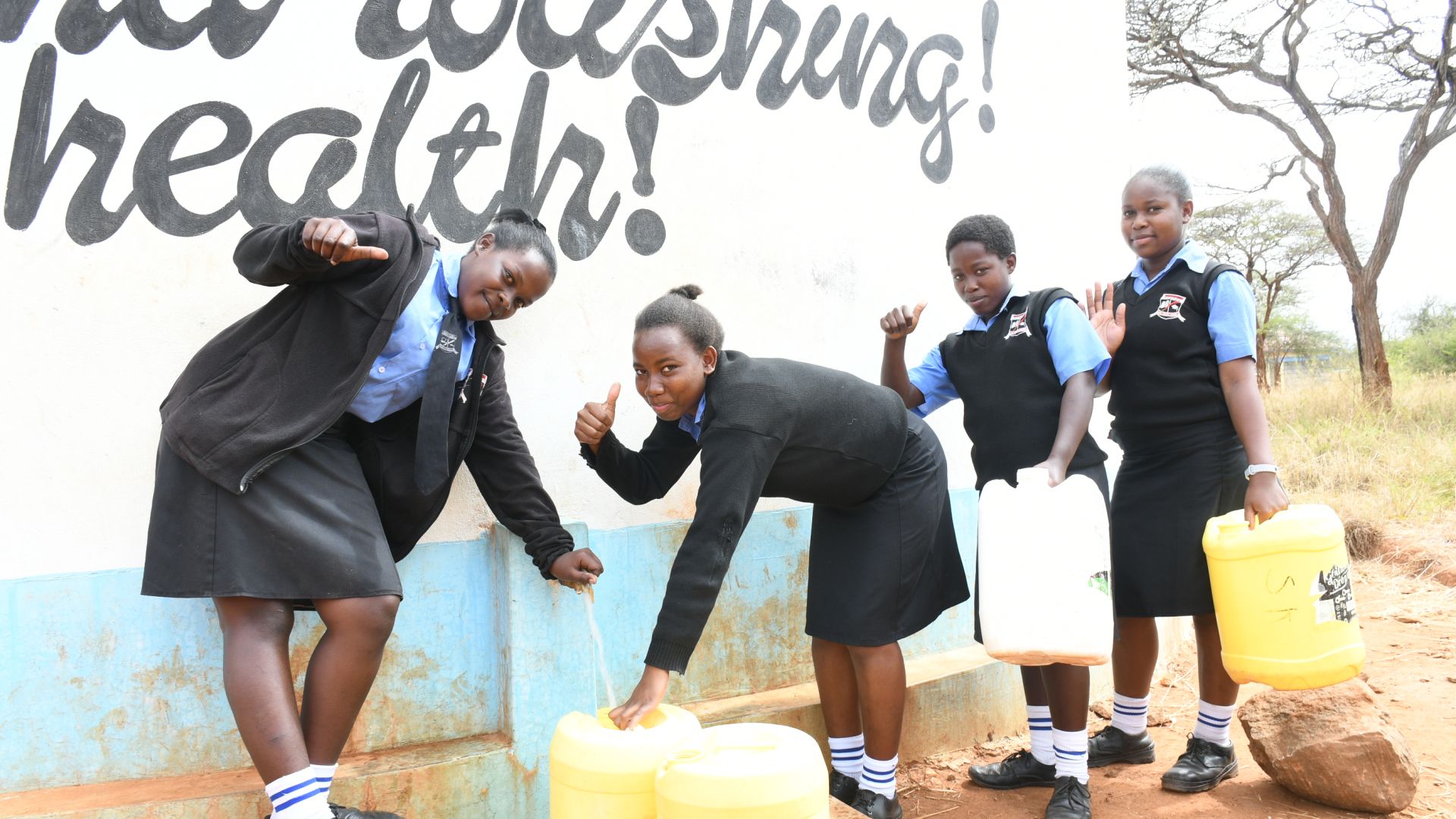The 323 students and staff of Kavaini Secondary School struggle to access sufficient water. They currently have small rain tanks on campus that cannot collect and store enough water to meet all the school's needs. Without enough water, they make many sacrifices.
Field Officer Alex Koech shared, "The available 60,000-liter rainwater tanks offer inadequate water that cannot sustain the entire school's population during the dry months. The tanks are made of plastic and succumb to the scorching sun during the dry periods, leading to leakages. When the rainwater is depleted, the school has to purchase water from the water boozer (water delivery service), which is mostly salty. Purchasing water is also costly, around 144,000 Ksh (almost $1,000) every year.

Teacher Ngui Mutemi shared his perspective. "Managing the school is very difficult because of the high water expenses, which forces us to send students home for school fees occasionally. It's also frustrating to ensure the school schedule runs as expected because water is scarce, which causes delays in meal preparation, and the classrooms are rarely cleaned. Constructing more infrastructure in the school is also impossible because we do not have water to engage in such activities. When the project will be installed, our students will have enough water to drink, and the water expenses will reduce which will be a great reprieve."

Without enough water, students miss out on meals, hygiene practices, and time in the classroom. The school is unable to expand or offer extracurricular activities because everything requires water. Students often don't even have enough to drink, and it's hard for anyone to focus on learning.

The students' self-esteem is also greatly affected. Their environment is dry, and their classrooms are dirty. They themselves don't often have the privilege of bathing. All of this makes life disheartening for kids who should be dreaming of their future potential.
"After taking our delayed meals at school, we have to struggle to fetch water for drinking at the school tanks. We use plastic plates, which at times break because everyone is trying to get some water before lunch break comes to an end and the tap is closed again. The water is so little, and it's a struggle to even get water to conduct personal hygiene like brushing teeth or taking a bath," said 15-year-old Mutua M., seen below.

"This usually lowers my self-confidence. I will be very happy when the proposed project is set up because I will drink water whenever I can, and I will be able to conduct my personal hygiene every day before going to class," she continued.
The installation of the 104,000-liter rain tank will enable students and staff alike to renew their passion for learning and give them the opportunity for a brighter future unencumbered by the water crisis.
Water at schools is unique, which is why we need unique solutions.
The Proposed Solution, Determined Together...
At The Water Project, everyone has a part in conversations and solutions. We operate in transparency, believing it benefits everyone. We expect reliability from one another as well as our water solutions. Everyone involved makes this possible through hard work and dedication.
In a joint discovery process, community members determine their most advantageous water solution alongside our technical experts. Read more specifics about this solution on the What We're Building tab of this project page. Then, community members lend their support by collecting needed construction materials (sometimes for months ahead of time!), providing labor alongside our artisans, sheltering and feeding the builders, and supplying additional resources.
Water Access for Everyone
This water project is one piece in a large puzzle. In Kenya, Sierra Leone, and Uganda, we're working toward complete coverage of reliable, maintained water sources that guarantee public access now and in the future within a 30-minute round trip for each community, household, school, and health center. One day, we hope to report that this has been achieved!
Training on Health, Hygiene & More
With the community's input, we've identified topics where training will increase positive health outcomes at personal, household, and community levels. We'll coordinate with them to find the best training date. Some examples of what we train communities on are:
- Improved hygiene, health, and sanitation habits
- Safe water handling, storage & treatment
- Disease prevention and proper handwashing
- Income-generation
- Community leadership, governance, & election of a water committee
- Operation and maintenance of the water point
Handwashing Stations
Alongside each water source in Southeast Kenya schools, we also provide three new handwashing stations fitted with three taps each, allowing nine students to wash their hands at once. These will allow everyone at the school to wash their hands without running water. Handwashing is so important to help prevent future water-related illnesses in the school community.
The student health club will maintain the stations, fill them with water, and supply them with soap (which we will teach the school community how to make during the training!).





 Rainwater Catchment
Rainwater Catchment
 Rehabilitation Project
Rehabilitation Project





























